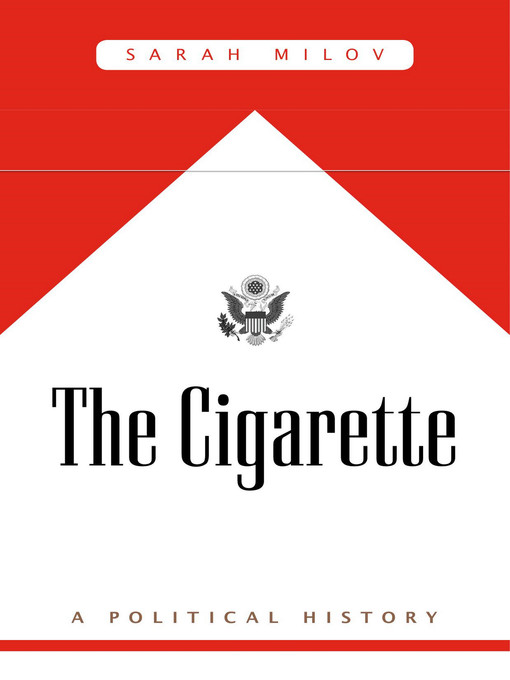
The Cigarette
A Political History
کتاب های مرتبط
- اطلاعات
- نقد و بررسی
- دیدگاه کاربران
نقد و بررسی

September 1, 2019
The cigarette in America, a history that "does not begin and end with Big Tobacco." Milov (History/Univ. of Virginia) mixes big-picture academic theory with fascinating, specific details to illuminate the rise and fall of tobacco production--and cigarette sales--in the United States. In 1965, writes the author, "politicians, experts, and everyday Americans increasingly knew that cigarettes were deadly...yet 42 percent of Americans smoked." The estimated number of smokers today is 15 percent. Milov shows how sales were boosted by the combined efforts of tobacco growers, wholesalers, retailers, industry lobbyists, public relations professionals from the private sector, labor unionists, and players within federal, state, and local governments. Then she explains how the increasingly well-documented health hazards from cigarettes led nonsmokers--including public-interest lawyers--to push local governments and employers to curtail smoking in public places and workplaces. At intervals within the mostly chronological narrative, the author discusses how tobacco farmers and cigarette manufacturers managed to sell their products in countries all over the world, with deadly consequences for consumers but positive economic consequences for foreign governments through the taxation of those consumers. Mostly, though, Milov focuses on American politics and the consumers affected by the policies surrounding cigarettes. At times, the author engages with philosophical questions: Is smoking a legal "right"? Do nonsmokers have a "right" to reside in a nonhazardous environment? Who should decide those rights when claims conflict? Throughout, Milov offers intriguing historical tidbits: For example, cigarette sales shot up during both world wars because U.S. military leaders decided the troops would feel appreciated if they received free cigarettes while deployed. In addition, the author shares compelling information about why labor union leaders wanted smoking allowed on the job even after the deadly nature of cigarettes became evident. The leading insight: Unions did not want to surrender control over what became mandatory smoking breaks. A fine history of "the political economy of tobacco."
COPYRIGHT(2019) Kirkus Reviews, ALL RIGHTS RESERVED.

July 19, 2019
In her first book, Milov (history, Univ. of Virginia) keenly describes the history of the U.S. tobacco industry during the 20th century, arguing that the government promoted smoking beginning with the New Deal. Following the World War II, America subsidized the exportation of tobacco to foreign markets. By the 1960s, the U.S. Surgeon General began authoring reports detailing the harmful and deadly effects of smoking. Activists belonging to groups with acronyms such as GASP and ASH advocated hard for nonsmokers' rights, which were met with hostility from the tobacco industry and its legislative allies from tobacco-producing states. Activists bypassed tobacco's supporters in Washington and took their clean-air campaigns and smoke-free area fights to state and local governments. Drawing on a wide variety of trade publications, government studies, and activist literature, Milov provides a thoughtful and penetrating analysis of both the tobacco industry, and its relationship to government. VERDICT Milov's history will be of great interest to those interested in political history and the interactions between the government and industry.--Chad E. Statler, Westlake Porter P.L., Westlake, OH
Copyright 2019 Library Journal, LLC Used with permission.

























دیدگاه کاربران